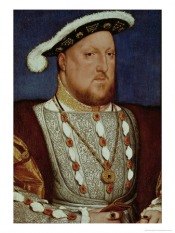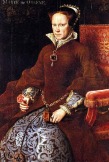Religion

The religion in the British Empire was mainly Protestant. But there were conflicts and struggles between Roman Catholic and Protestant. Before, the British Empire was mainly Roman Catholic. The Protestant Reformation was led by a monk from Germany, Martin Luther. At first, Henry VIII did not agree with the ideas that Luther had stated. However, after the split with Rome and many other things that Luther said should happen, actually did happen in England. Many changes took place, and those actions eventually helped Edward and Elizabeth transform England from a Roman Catholic, to a Protestant nation. And by 1603, the Protestant Reformation was fully completed.
Church Powers

The Church of England was created by Henry VIII in 1534 when he decided to separate the Anglican Church from the Church of Rome by his own authority. He did this because of three main reasons: personal reason, financial reason, and political reason. As for personal reason, the king wished to divorce with his wife, but the pope refused, so in order for his wishes to be met, he had to obtain power over the Church as well. The second reason was the financial reason. England was small and poor before colonization, and the King needed resources and money from the Church. The third reason was the political reason. Henry VIII wanted to be free of appointing the leaders of the Church. Religion was separated apart from the control of the British Empire. He passed certain laws that allowed him to obtain complete power, which included the Ecclesiastical Appointments Act 1534, (the only candidates for the role of bishop had to be nominated by the Sovereign), the Act of Supremacy 1534 (the King was the only Supreme Head in Earth of the Church of England) and the Treason Act 1534 (if one refused to acknowledge the previously mentioned laws, he was punishable by death).
Monarchy

When King Henry VIII's son Edward VI succeeded the throne, Protestantism was introduced to England for the first time. Then his half-sister Mary succeeded him, and restored Roman Catholicism to England. She burned around 300 people who rebelled against her, earning the name Bloody Mary.
Queen Mary's work was completely reversed when her half-sister Elizabeth took the throne. Queen Elizabeth I established Protestantism as the official religion of England. But there were a series of plots made by Roman Catholics who wanted to dethrone Elizabeth, and make Mary, Queen of Scots, (a Catholic) the queen.
Political System

The British Empire was run by the monarchy for the next few years, until King Charles I. The king had many assistants that helped him with many issues that he could not handle by himself. But after King Charles I was convicted of high treason and executed, the monarchy was replaced with a republic called the Commonwealth of England. The members of the first council were the Earls of Denbigh, Mulgrave, Pembroke, Salisbury, Lords Grey and Fairfax, Lisle, Rolle, Oliver St. John, Wilde, Bradshaw, Cromwell, Skippon, Pickering, Masham, Haselrig, Harrington, Vane jun, Danvers, Armine, Mildmay, Constable, Pennington, Wilson, Whitelocke, Martin, Ludlow, Stapleton, Hevingham, Wallop, Hutchinson, Bond, Popham, Valentine Walton, Scot, Purefoy, and Jones.
